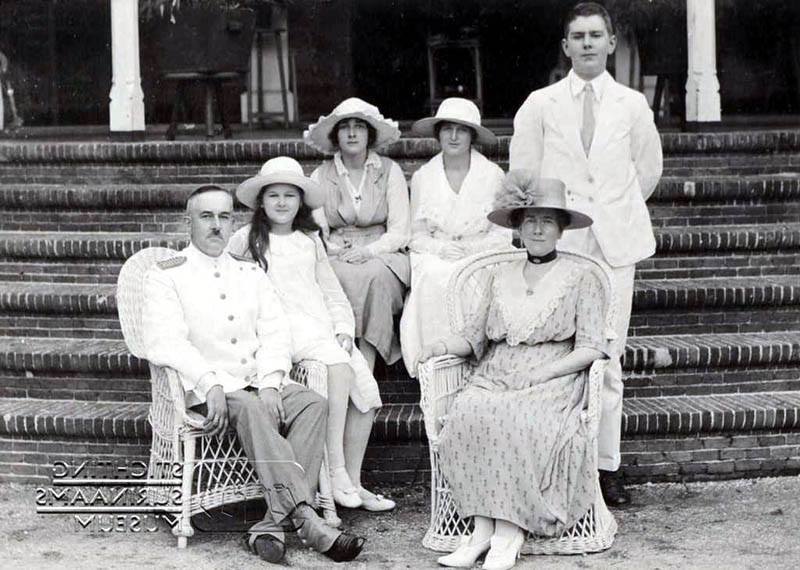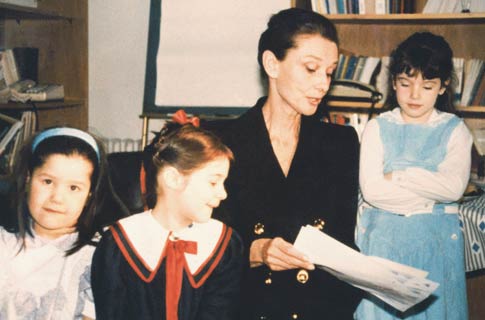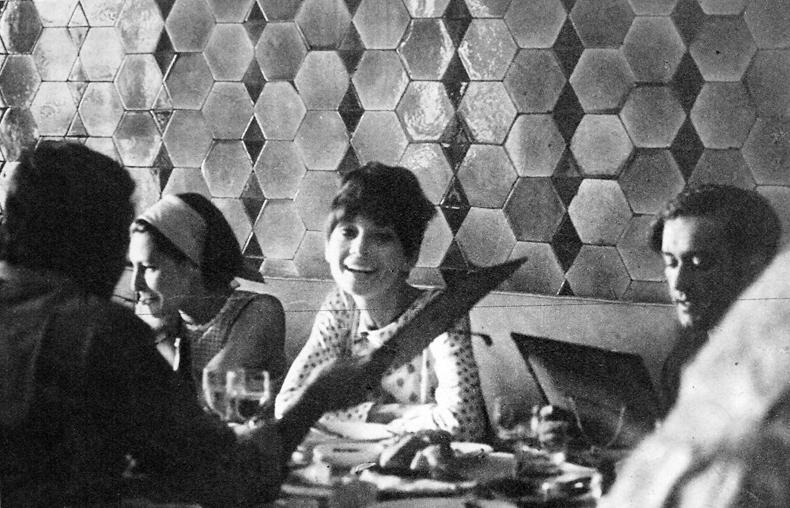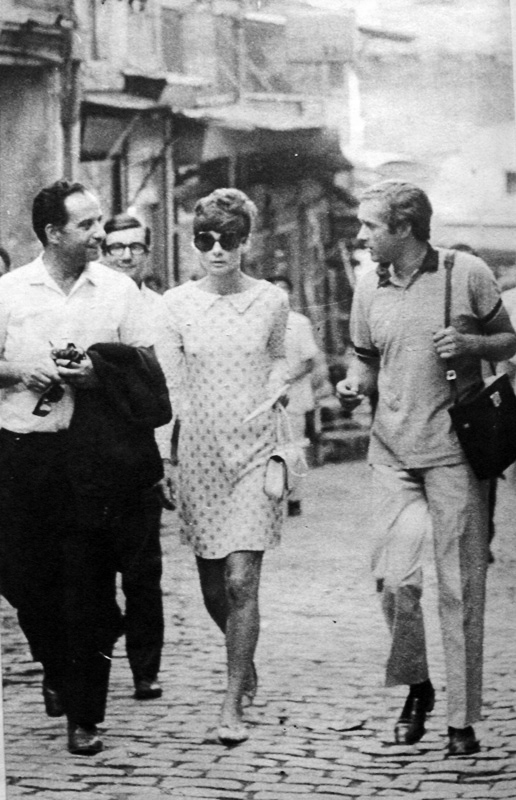
Ephemera
Van Heemstra photo
The countryside surrounding Smyrna was a place of farms and estates, some of them managed by Levantines as summer retreats, some fully working farms. One of these was the van Heemstra estate in the Cumaovasi / Seydiköy region. Though the location is not confirmed, the photo probably shows the family group on the steps of the mansion in this estate, 1900-20.

Baron Aarnoud van Heemstra (22 July 1871 – 30 December 1957) was a Dutch jurist and politician and is seated on the left. His wife seated opposite was Elbrig Willemine Henriette, Baroness van Asbeck (1896-1939). The Baron would have been a visitor, it was is son who was a tenant in part of the estate of another Dutch Levantine family, the Van Lenneps who have been based here for generations. In the 1902 diary of Gertrude Bell who was traversing the region the entry reads: ‘He lets out some of his land to a young Dutchman, Baron van Heemstra (clearly the junior), who has married a Smyrna-English girl and lives next door at Malcajik; nice pleasant people’. The junior family spent the WWI years in their farm here and expressed their loyalty to the Ottoman regime in a letter, like others they were probably trapped in Turkey during the Allied blockade. The Baron Aarnoud van Heemstra was mayor of Arnhem in Holland from 1910 to 1920 and served as the Royal Governor of that Dutch Colony from 1921 to 1928. After WWI, in the confusion of the latter stages of the Greek-Turkish war of 1919-22, the forces of Çerkes Ethem militia was active in the region and the Van Heemstra fearing a kidnap situation left their farm for good. The Baron’s fears of banditry were well-founded in such an isolated location as he was himself kidnapped and ransommed earlier in May 1907. In the background are elder Baron’s children, Wilhelm Hendrick Johan van Heemstra, Miesje (1897-1987), Ella (1900-1984) and possibly Marianne (1903-1991). The only member of this family truely connected with the Levant was Willem Hendrik Johan, Baron van Heemstra (1875-1923) who married in Bournabat 1901 Maud Blanche Whittal (1874-1971). He was registered as a landowner / farmer near Smyrna, probably this location.
Baron Aarnoud van Heemstra faced hard times later in German occupied Holland where he refused to cooperate with the regime and as punishment was forced to move out of his estate and virtually all he owned was confiscated. In 1942, his son-in-law Otto graaf van Limburg Stirum was executed in retaliation for a sabotage by the resistance movement. After this, his widowed daughter Miesje and his divorced daughter Ella lived with him in Velp, along with Ella’s youngest child, the future actress Audrey Hepburn (Audrey Kathleen Ruston, 1929-1993).
The Van Heemstra family is well documented in the Nederland’s Adelsboek (Book of the Dutch nobility) 1994. Before long a book about the history of the Van Heemstra will be published, authored by Ko van Geemert, publisher Steven Sterk.
It appears that the family like many others never returned to Turkey post 1922 as there was little left to rescue from their old lives, even if their former properties were still standing. Audrey Hepburn was a generation removed from this link and perhaps was only vaguely aware of these roots when in August 1988 she went to Turkey on an immunisation campaign. She called Turkey “the loveliest example” of UNICEF’s capabilities. Of the trip, she said “the army gave us their trucks, the fishmongers gave their wagons for the vaccines, and once the date was set, it took ten days to vaccinate the whole country. Not bad”.

Visiting Turkey in 1988, UNICEF Goodwill Ambassador Audrey Hepburn said the country was “the most lovely example of UNICEF’s ability to provide brilliant organisational skills in partnership with cooperative nations.”

Audrey Hepburn vacationing in Istanbul, Turkey with Andrea Dotti and best friend Doris Brynner, June 1968.

Audrey Hepburn on vacation in Istanbul, Turkey with Andrea Dotti (right), 1968, the second husband from 1969 to 1982 - they had met less than a month ago in Greece.
Additional note:
THE KIDNAPPING OF WILLEM HENDRIK JOHAN VAN HEEMSTRA - From: the daily paper “Leeuwarder Courant” of 31 May and 20 July 1907.- translated by Henrick van Lennep
“Some years ago W.H.J. baron van Heemstra settled in the province Adin (Smyrna) as gentleman-farmer on several taifliks (landed estates). He married some years ago with a Miss Whittall, belonging to an old rich English-Levantine family.
Mr. Van Heemstra bought from a Turkish man an estate in one of the most unsafe parts of the province, about six hours by horse from the nearest train station (still more than one hour by train from Smyrna). He always travelled from that train station without company although he was warned from authorised persons not to expose himself.
The professional robbers from partly Greek and partly Turkish descent who baron van Heemstra kidnapped came from the same province.
We can inform about the robber-chief Andreas, whose latest heroic deed was the abduction of our fellow countryman baron van Heemstra, that he was born in Lamba in Greece, murdered twelve years ago with an axe one of his uncles after a dispute about an inheritance, flee to Smyrna and settled in Boudja. He became engaged with a young girl seven years later, but he murdered during a dispute about some guilders her brother-in-law. He flees to the mountains. He was sentenced by default to 15 years hard labour. He became the leader of a gang notorious in the whole district of Smyrna, threatened the wealthiest residents and cheated them in all kinds of ways. He murdered in 1905 an Albanian named Salih. Shortly afterwards he invaded a house, injured a young girl and stole 250 pounds. He received for an abducted forester 600 pounds. Now he is in hospital, heavily wounded, but he is not yet dead.”
